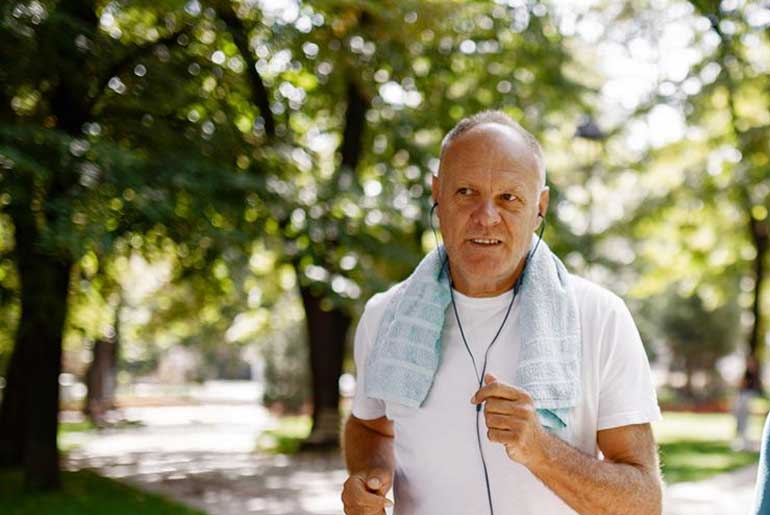A recent study published in the Journal of the American College of Cardiology suggests that women may derive greater health benefits from their workouts compared to men. The research indicates that women can achieve an equivalent ‘survival benefit’ to men with considerably less exercise. Specifically, women need just under 2.5 hours of moderate to vigorous aerobic activity per week, while men require five hours of physical activity to attain similar rewards. This implies that women engaging in regular exercise could reduce their mortality risk by an impressive 24%, surpassing the 15% reduction observed in men. The findings underscore the importance of tailored exercise recommendations for different genders.
The study conducted a thorough analysis of health data from a vast cohort of 412,413 adults throughout the United States, covering the period from 1997 to 2019. The research revealed that by the end of the study period, 39,935 adults had succumbed to various causes, with 11,670 of those deaths attributed to cardiovascular issues. This extensive dataset forms a robust foundation for the findings indicating the differential impact of exercise on mortality risk for men and women, providing valuable insights into the nuanced relationship between physical activity and health outcomes.
Additionally, the study uncovered insights into strength training, revealing that women attain peak benefits with just one session of muscle-strengthening activities per week, in contrast to men who require three such sessions to achieve comparable benefits. This finding highlights a potential gender-specific difference in the optimal frequency of strength training for maximal health advantages, offering valuable guidance for tailoring exercise recommendations based on gender-specific considerations.
Heart-healthy exercises for women:
Absolutely, heart-healthy exercises play a crucial role in promoting cardiovascular health and overall well-being, especially for women. A well-rounded fitness routine that incorporates a mix of aerobic exercises, strength training, and flexibility exercises can contribute to a balanced and sustainable approach to health. Aerobic exercises, such as walking, running, or cycling, help improve cardiovascular endurance, while strength training enhances muscle strength and metabolism. Flexibility exercises, like yoga or stretching routines, promote joint mobility and reduce the risk of injuries. This holistic approach not only supports heart health but also contributes to overall physical fitness and longevity.
Aerobic Exercises: These exercises focus on increasing cardiovascular endurance.
- Brisk Walking, Jogging, Running: These activities improve heart health and can be adjusted to different intensity levels.
- Cycling: A low-impact exercise that strengthens leg muscles and improves cardiovascular fitness.
- Swimming: Provides a full-body workout while being gentle on the joints.
Strength Training: Helps build muscle strength and endurance.
- Bodyweight Exercises: Utilize your body weight for resistance, enhancing muscle tone and functional strength.
- Resistance Training: Incorporates external resistance, such as bands or weights, to challenge muscles and promote growth.
- Weight Machines: Target specific muscle groups with controlled resistance for strength development.
Flexibility and Stretching: Improves range of motion and prevents injury.
- Yoga, Pilates: Enhances flexibility, core strength, and overall body awareness through controlled movements and breath work.
- Stretching Routines: Incorporate dynamic (movement-based) and static (held) stretches to improve flexibility and reduce muscle tension.
Interval Training: Alternates between high-intensity bursts and rest periods, boosting cardiovascular fitness and calorie burning.
- High-Intensity Interval Training (HIIT): Maximizes calorie burn and cardiovascular benefits in a shorter amount of time.
Dancing: A fun and social way to elevate heart rate and improve coordination.
- Zumba, Aerobic Dance: Combines dance movements with aerobic exercises for an enjoyable workout experience.
Mind-Body Exercises: Focuses on the connection between mind and body, promoting relaxation and stress reduction.
- Tai Chi, Qi Gong: Incorporate gentle movements, deep breathing, and meditation to improve balance and overall well-being.
Cardio Classes: Structured group classes targeting cardiovascular fitness.
- Spin, Step Aerobics, Cardio Kickboxing: Engage in energetic workouts led by instructors for motivation and guidance.
Outdoor Activities: Provides the benefits of exercise and nature.
- Hiking, Jogging Trails, Nature Walks: Enjoy physical activity while connecting with the outdoors.
It’s crucial to choose activities that align with your interests and goals while considering any existing health conditions or physical limitations. Consulting with a healthcare professional or fitness expert can help tailor an exercise program to meet individual needs safely and effectively.
Disclaimer:
The information contained in this article is for educational and informational purposes only and is not intended as a health advice. We would ask you to consult a qualified professional or medical expert to gain additional knowledge before you choose to consume any product or perform any exercise.







